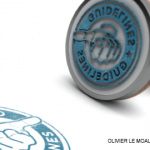 Due to immunosuppressive medications and other disease factors, patients with inflammatory arthritis or systemic lupus erythematosus (SLE) are at increased risk of infection following total hip arthroplasty (THA) or total knee arthroplasty (TKA). However, withholding such medications around the time of surgery increases the risk of disease flares. A new guideline update recently released by the ACR and the American Association of Hip and Knee Surgeons (AAHKS) provides clinicians with specific information to help with perioperative management.1
Due to immunosuppressive medications and other disease factors, patients with inflammatory arthritis or systemic lupus erythematosus (SLE) are at increased risk of infection following total hip arthroplasty (THA) or total knee arthroplasty (TKA). However, withholding such medications around the time of surgery increases the risk of disease flares. A new guideline update recently released by the ACR and the American Association of Hip and Knee Surgeons (AAHKS) provides clinicians with specific information to help with perioperative management.1
DMARD Guidance
In 2017, the ACR and the AAHKS collaboratively produced the first guideline on perioperative management of these patients, specifically with respect to the use of disease-modifying anti-rheumatic drugs (DMARDs).2 The recently released guideline update reflects changes in the medical literature since that time. It also provides specific recommendations on therapies newly approved by the U.S. Food & Drug Administration (FDA) for these conditions (e.g., ixekizumab).
Post-surgery infections occur more often in patients with rheumatoid arthritis, spondyloarthritis and SLE than in patients with osteoarthritis, which is the most common reason for these replacements in the general population.2 For example, one study found that patients with rheumatoid arthritis had twice the risk of developing an infection in the region surrounding their new prosthetic joint compared with patients with osteoarthritis.3 The guideline recommendations are designed to balance the risks of post-surgical infection with the risks of disease flare, which can be quite serious in such conditions as severe SLE.
One of the guideline panel participants, Jasvinder A. Singh, MD, MPH, professor of medicine and epidemiology at the University of Alabama at Birmingham and a staff rheumatologist at the Birmingham Veterans Affairs Medical Center, notes these infections can range in severity from mild suture infections to deep infections that spread into the joint and prosthesis. “Although rare, the latter are disastrous—a huge deal for both the patient and the surgeon,” he says.
Dr. Singh explains that recovery from such infections can require multiple surgeries over a one- to two-year period, causing major issues with patient disability and immobility, as well as a high risk of reinfection when a new prosthesis is eventually surgically implanted.
Lead guideline author Susan M. Goodman, MD, professor of clinical medicine at Weill Cornell Medicine and an attending rheumatologist at the Hospital for Special Surgery, New York City, notes that the patients who participated in the patient panel on the 2017 guideline were more concerned about infection risk than the risk of flare, even though disease flares after surgery may occur in more than half of patients.1,2 “They were remarkably unified in their concern about infection,” Dr. Goodman says. “They felt that while flares were very difficult, infections could become severe, and their unpredictable nature was even more difficult.”
TKA and THA were originally selected as a focus for the perioperative guideline because they are performed so frequently, Dr. Goodman explains, adding, “They can provide the most data for us to work with in defining our recommendations.” Although the guideline is intended to apply to patients undergoing these specific orthopedic surgery types, Dr. Singh notes that as a matter of practicality, some clinicians may extrapolate from them to use in other surgical settings (e.g., shoulder replacement) for which guidelines do not currently exist.
Post-surgery infections occur more often in patients with rheumatoid arthritis, spondyloarthritis & SLE than in patients with osteoarthritis.
Guideline Development
The rheumatologists, orthopedic surgeons and infectious disease specialists who updated this current guideline performed additional systematic literature review and wrote population, intervention, comparator and outcome (PICO) questions to reflect current medications. Like other recent ACR guidelines, they also used the Grading of Recommendations Assessment, Development and Evaluation (GRADE) methodology to rate the quality of the evidence and the strength of the recommendations using group consensus. Dr. Singh notes that this was a highly collaborative process, with each group contributing their expertise; consensus for the recommendations was quite high, with none achieving less than 80% agreement.
No new randomized, controlled trials informed the evidence base for this update. Dr. Goodman points out that the literature used to make these recommendations contained very little data directly comparing outcomes in patients taking or withholding anti-rheumatic medications at the time of surgery. “Therefore, we applied studies that determined the risk of infection with the medications in patients who were not undergoing surgery and used that to assess risk,” she explains. Some data were also extrapolated from patients without rheumatic diseases. Clinicians can make their own assessment of the data used to compile the guidelines via information freely available on the ACR website.
Recommendations
A brief discussion of some of the recommendations from the guideline follows. For the full set of recommendations and their context, please see the complete guideline. The recommendations apply to patients with inflammatory arthritis (i.e., rheumatoid arthritis, ankylosing spondylitis, psoriatic arthritis or juvenile idiopathic arthritis) and patients with SLE who are undergoing elective THA or TKA. All these recommendations are conditional, indicating the level of evidence on which they are based is low or that the decision may be subject to patient preference.
Recommendation: For patients with inflammatory arthritis or SLE, the following DMARDs should be continued through surgery without interruption: methotrexate, leflunomide, hydroxychloroquine, sulfasalazine and apremilast.
The existing literature suggests these drugs may be taken safely during the perioperative period. Observational studies have found no increased risk of infections in patients taking these drugs. This recommendation is unchanged from the previous guideline, but also includes the addition of the synthetic DMARD apremilast.
Recommendation: For patients with non-severe SLE, most medications should be withheld one week prior to surgery (except those listed directly above).
This recommendation, unchanged from the previous guideline, includes such medications as mycophenolate mofetil, azathioprine, cyclosporine and tacrolimus.
Recommendation: For patients with inflammatory arthritis, withhold all biologics prior to surgery and plan the surgery shortly after the next dose would be due.
This timeframe was picked because drug levels and drug biological activity are low during this time, which help maximize safety, Dr. Singh explains. For example, for a patient taking adalimumab, normally dosed every two weeks, surgery could be planned for week 3 after the last given dose; similarly, for rituximab, normally dosed every six months, surgery could be planned for month 7 after the last given dose. This recommendation also applies to the recently introduced biologics ixekizumab, a blocker of interleukin 17, and guselkumab, a blocker of interleukin 23.
Recommendation: For patients with inflammatory arthritis or SLE who had anti-rheumatic therapy withheld prior to surgery, restart therapy once the wound shows evidence of healing without any signs of infection.
Typically, this occurs about 14 days after surgery, but it might be earlier or later, depending on the status of the wound and the patient’s overall health. Dr. Singh explains, “You end up skipping a dose. You maximize safety, but you don’t risk flare by holding it for too long.”
Recommendation: For patients with inflammatory arthritis, hold Janus kinase (JAK) inhibitors for at least three days prior to surgery.
This recommendation, which applies to the targeted synthetic DMARDs tofacitinib, baricitinib and upadacitinib, was changed from a seven-day hold in the previous guideline. Dr. Singh notes that since that time, we’ve gained a better understanding of the clinical effects of these drugs, suggesting a more rapid reversal of immunosuppressive effects than previously believed. This makes it safer to withhold them for a shorter period.
Recommendation: For patients with severe SLE, continue the usual dose of the following drugs through surgery: mycophenolate mofetil, mycophenolic acid, azathioprine, mizoribine [not available in the U.S.], cyclosporine, tacrolimus, anifrolumab, voclosporin, belimumab and rituximab.
Dr. Singh points out that in severe lupus, the risk of organ failure and severe outcomes from uncontrolled disease is far worse than any risks from the drug being continued. “Some of those mortality and organ failure risks do go up just because of fluid shifts and stress from the surgery itself,” he adds, “so it’s quite critical to continue medications in those instances.” Voclosporin and anifrolumab, two new drugs for lupus, were added to this list in the updated guideline; however, we don’t currently have specific data relevant to their use in the perioperative period.
Given its six-month dosing interval and its known risk of severe infection, perioperative management of rituximab has long been a challenge. Although not technically approved for SLE by the FDA, it has increasingly been used in this context. In contrast to the previous guideline, this update separates the use of rituximab in SLE from its use in other diseases (e.g., to be held in inflammatory arthritis). For non-severe SLE, surgery should be performed in the month after the last expected dose (i.e., month 7); in severe SLE, surgery should be performed in the last month of the dosing cycle (i.e., month 6) to minimize infection risk while not skipping a dose.
Recommendation: For patients with inflammatory arthritis or SLE who are taking baseline glucocorticoids, continue this daily dose but do not administer additional glucocorticoids on the day of surgery.
This recommendation is unchanged from the previous guideline, but two new sources support it. Dr. Goodman explains that administering additional glucocorticoids on the day of surgery became commonplace after reports of severe hypotension and death in a patient who had stopped glucocorticoids several days prior to surgery. “More recently, no differences in hemodynamics have been seen when patients receive their usual dose, so that is our current recommendation,” she adds.
Putting Recommendations in Context
As always, these recommendations only provide guidance; physicians must use their own clinical judgment in combination with patient input to make decisions. For example, in a patient whose disease has been historically difficult to control, the best choice may be continuing to take a DMARD, even if a conditional recommendation in the guideline suggests holding it.
Similarly, it may make sense for some patients to temporarily hold a medication, even when conditional guidance would be to continue it. For example, this might be the case for a patient with a history of severe infections or a previous joint infection, or a patient whose disease has been very stable and not subject to flares. Dr. Singh points out that this conversation between the patient, the orthopedic surgeon and the rheumatologist is critical, so that each patient’s individual risk can be fully considered.
Building the Evidence Base
The updated guideline does not provide information with respect to patients on multiple therapies. Dr. Singh explains that little to no evidence currently exists about how to handle DMARD combination therapy in the perioperative period. We also don’t have much information about the benefits of holding one vs. two doses of these drugs.
One research challenge, Dr. Singh points out, is that the baseline risk of these infections is low, so it can take very large study sizes to see differences in rates of infection or other complications. He would also like to see prospective studies of rates of flares in these patients, in addition to the current retrospective data. “We have unanswered questions in almost every sphere of the guideline; we would ideally want high quality randomized trials in several of these conditions for almost every medication,” he adds.
Ruth Jessen Hickman, MD, is a graduate of the Indiana University School of Medicine. She is a freelance medical and science writer living in Bloomington, Ind.
References
- Goodman SM, Springer BD, Chen AF, et al. 2022 American College of Rheumatology/American Association of Hip and Knee Surgeons guideline for the perioperative management of antirheumatic medication in patients with rheumatic diseases undergoing elective total hip or total knee arthroplasty. Arthritis Care Res (Hoboken). 2022 Jun 19;10.1002/acr.24893.
- Goodman SM, Springer B, Guyatt G, et al. 2017 American College of Rheumatology/American Association of Hip and Knee Surgeons guideline for the perioperative management of antirheumatic medication in patients with rheumatic diseases undergoing elective total hip or total knee arthroplasty. Arthritis Care Res (Hoboken). 2017 Aug;69(8):1111–1124.
- Ravi B, Croxford R, Hollands S, et al. Increased risk of complications following total joint arthroplasty in patients with rheumatoid arthritis. Arthritis Rheumatol. 2014 Feb;66(2):254–263.





